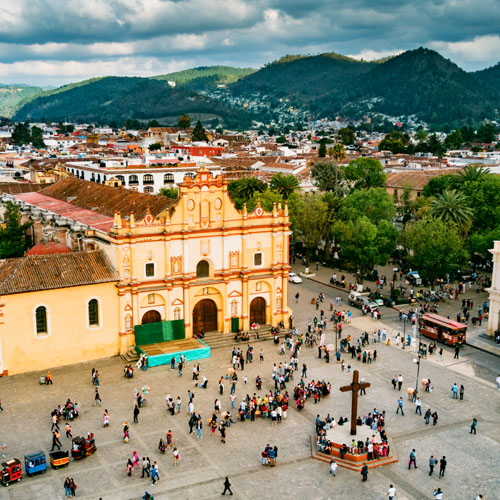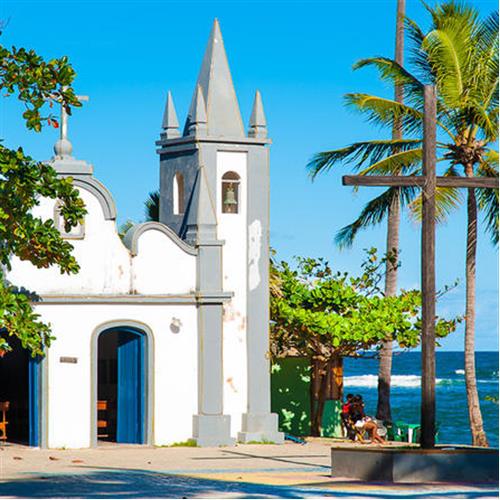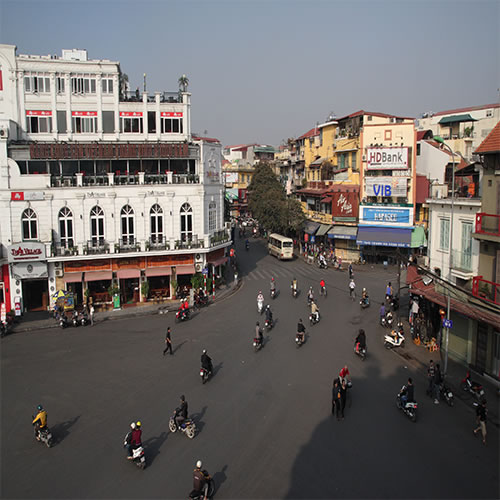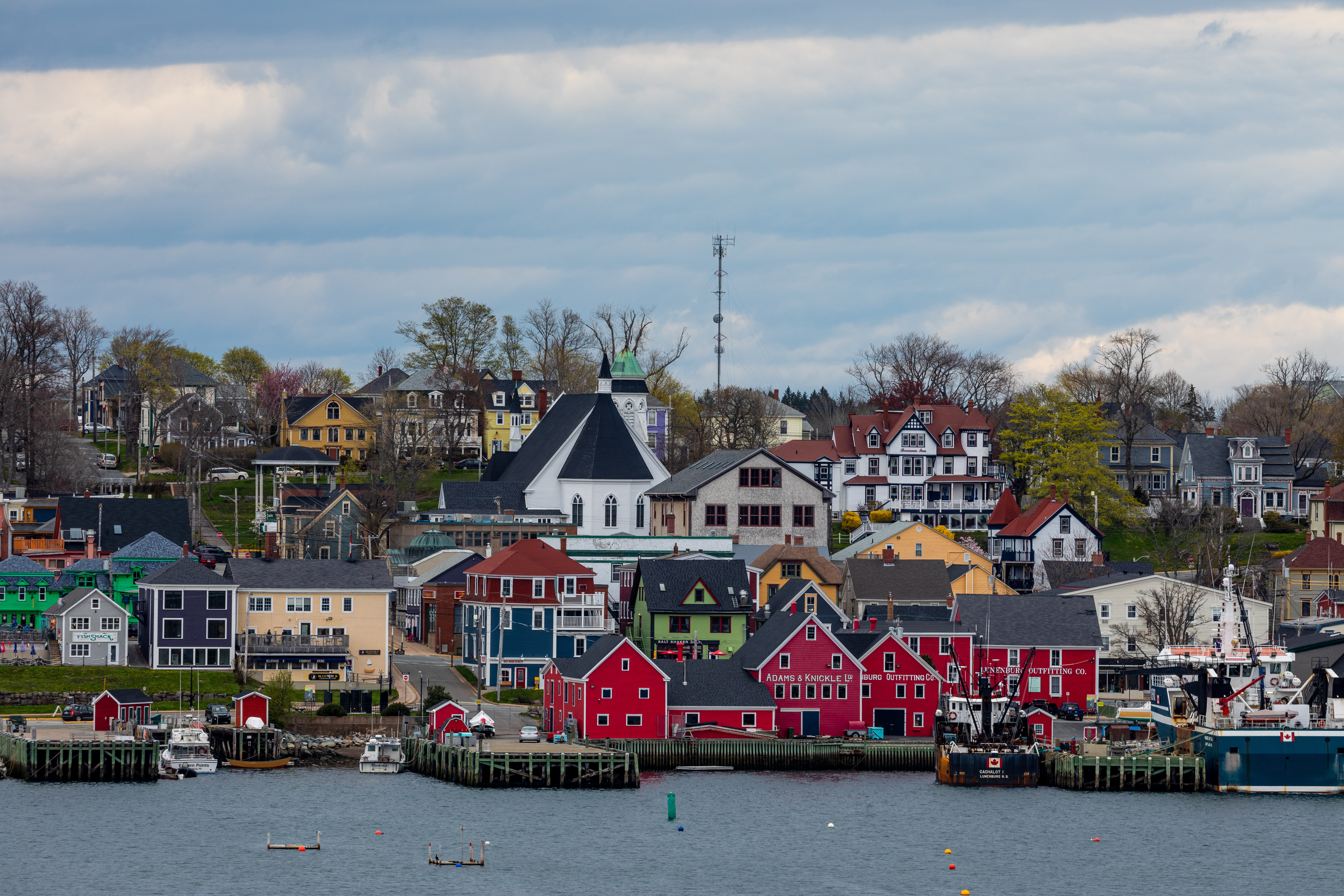The six major colonial powers conquered much of the world outside Europe, including where we in North America live today. Those six powers — Great Britain, Spain, Portugal, France, the Netherlands, and Germany — have influenced the world we live in through architecture, culture, language, religion, and sheer indomitability, which is necessary when leaving home for an unknown land. These pilgrims, these pioneers, these explorers, were among the first to interconnect all parts of the world. These same people carried with them innovations and ideas that changed our world. Below you’ll find examples of some of the most beautiful colonial cities and towns worldwide, and information on how to book your own educational and fun colonial vacation with Tripmasters.

In the 17th and 18th centuries, the British Empire established colonies in North America. On the Atlantic Coast in the middle of the continent there were the Thirteen Colonies, now part of the USA. North of the Great Lakes east to the Gulf of Labrador, the dual colonies called The Canadas would unite in 1841 to become Canada. Plymouth, Massachusetts; Jamestown, Virginia; Williamsburg, Virginia; Annapolis, Maryland; and Dover, Delaware were noteworthy colonial towns in the Thirteen Colonies, while its largest cities were Boston, New York City, Newport (Rhode Island), Philadelphia (pictured: Independence Hall), and Charleston (South Carolina). The Canadas were settled later, and by 1800 there were thriving towns and cities in these colonies such as Saint John, New Brunswick; Québec City, Québec; Montréal, Québec; Halifax, Nova Scotia; and Sherbrooke, Québec. Let us offer you some interest pages that will serve as extra inspiration while you plan your North American British colonial getaway with Tripmasters: Canadian Cultural Experiences, Historic Towns of the Northeast, Mid-Atlantic, and the South.
Britain began to colonize islands in the Atlantic Ocean with its takeover of Bermuda in 1612. The islands of the Caribbean were next, many of which were taken from fellow colonial superpowers France and Spain. The first British colonies in the Caribbean were founded in the 1620s on the islands of St. Kitts and Barbados. By the end of the century, the British started colonies across the Caribbean Sea, including on the islands of Nevis, Antigua, Jamaica, Montserrat, Anguilla, and Tortola. Some of the most beautiful examples of British colonial architecture in the Caribbean can be found in the charming colonial towns of Bridgetown, Barbados (pictured: the Parliament of Barbados); Kingston and Spanish Town, Jamaica; Port of Spain in Trinidad and Tobago; Castries, the capital of St. Lucia; and Basseterre and Charlestown on the islands of St. Kitts and Nevis. Britain even had a colony in South America, now called Guyana, and its capital Georgetown is a treasure trove for colonial architecture, which The New York Times has called “Tropical Victorian“.


The Tudor conquest in the 16th century firmly cemented British control over the neighboring island of Ireland, and the British would rule until the 1920s. Dublin is probably the best example of the legacy of British colonization on the Republic of Ireland, with landmark Dublin Castle receiving an 18th-century reconstruction while it was the seat of the British government in Ireland. The northernmost sixth of Ireland, Northern Ireland, is part of the United Kingdom to this day. Georgian architecture can be seen in abundance on Henrietta Street and Mountjoy Square in Dublin, and also on O’Connell Street in Limerick.
British conquest of Australia and New Zealand occurred much later. Sydney was founded originally as a penal colony, and its oldest buildings date from 1788. The cityscape and landmarks of Melbourne (known for its British-era buildings such as St. James’ Old Cathedral and Flinders Street Station, pictured) date from the 1830s. New Zealand was officially colonized by the British beginning in 1840, with the oldest settlements (Wellington, Petone, and Christchurch) still boasting colonial charm, mixed in with modern architecture.
In the 18th century, the British East India Company started to colonize the Indian subcontinent. Calcutta (modern-day Kolkata) was the capital, transitioning to New Delhi as capital in 1911. When the British Raj was formed in 1858, formalizing India as a crown colony, the government invested a lot of money into constructing European-style buildings and churches in Madras (Chennai), Calcutta (Kolkata), and Bombay (now Mumbai). The 19th century also found Britain colonizing Ceylon (now Sri Lanka) and leaving a colonial legacy in the capital, Colombo. The cities of Singapore and Hong Kong, now major world financial and business epicenters, were flourishing trading posts and colonies by 1850.
By the second half of the 19th century, British colonial ambitions turned to Africa. By the time World War I broke out, Britain was one of the main colonial powers in Africa, colonizing modern-day Egypt; South Africa (as the Cape Colony), Zimbabwe (as Rhodesia), and Ghana (the Gold Coast), among others. British colonial influence in Africa can still be felt and seen in Cairo and Alexandria, Egypt; Harare (formerly Salisbury), Zimbabwe; Cape Town, South Africa (pictured: The Old Parliament Building); and Accra, Ghana.





Spanish colonial ambitions started in the early 15th century with the colonization of the Canary Islands. Then, King Ferdinand and Queen Isabella approved a voyage that would change the Western Hemisphere forever. Christopher Columbus’s discovery of the “New World” in 1492 was the beginning of entrenched Spanish influence in what is now known as Latin America. The modern-day nation of Mexico, known for three centuries as New Spain, was the most influential of Spain’s colonies worldwide. Spain’s colonial architecture and heritage can be seen and experienced in a variety of cities and towns. The oldest colonial towns in Mexico are Veracruz, Mexico City, Colima, Oaxaca, Querétaro, and Guadalajara, all founded between 1517 and 1540. Other beautiful Spanish colonial towns in Mexico include Guanajuato, Morelia, San Miguel de Allende, Taxco, Cuernavaca, Campeche, Mérida, Puebla, San Juan Chamula, San Luis Potosí, and San Cristobal de las Casas (pictured). For more information on how you can book your own Spanish colonial vacation in Mexico, click here.
The province of New Spain included western and eastern “internal provinces“. The western province included areas such as modern-day Puerto Vallarta, Mazatlán, Los Cabos, San Diego, Los Angeles, San Francisco, Tucson, Santa Fe (pictured: the Palace of the Governors), and even as far east as El Paso. The eastern province included areas that are now the central and eastern portions of the U.S. state of Texas, such as modern-day San Antonio, Houston, and Dallas. Then there were the provinces of Luisiana (which provided much of the land acquired by the U.S. in the Louisiana Purchase), where Nueva Orléans was the capital, and Florida, where there were dual capitals: Pensacola and Saint Augustine. The charming towns of colonial Central America, governed by the Captaincy General of Guatemala and the Audiencia de Santa Fe, include such popular destinations as Panama City, Panama; Granada and León in Nicaragua; San Pedro Sula in Honduras; Nahuizalco, El Salvador; and Antigua, Guatemala.


The first Spanish town in the Americas was founded in 1493 at La Isabela in what is now the Dominican Republic. The oldest continuously-inhabited Spanish colonial city in the New World is the Dominican capital, Santo Domingo, founded in 1496. The Colonial Zone in Santo Domingo is a UNESCO World Heritage Site. Other cities founded in the generations after Columbus arrived in “the New World” are Panama City, Panama (1519); Havana, Cuba (also 1519); San Juan, Puerto Rico (1521); Granada, Nicaragua (1524); San Salvador, El Salvador (1525); and Antigua, Guatemala (1543), just to name a few.
Around this time, the Audiencia de Santa Fé established the New Kingdom of Granada, comprising much of modern-day Panama and Colombia. The colonial city center of Cartagena (pictured) is a UNESCO World Heritage Site, and Colombia’s capital Bogotá is also known for its Spanish colonial neighborhoods and buildings. The Viceroyalty of Peru (1542-1824) conquered the land of the Incas and set up colonial cities and towns in Lima, Cuzco, Cajamarca, and Trujillo, and these cities are still renowned for their colonial architecture. As Spanish colonization took hold over much of South America, noteworthy towns popped up in places like Potosí and Sucre in Bolivia; Colonia del Sacramento in Uruguay; Buenos Aires and Salta in Argentina; and Santiago, Valdivia, and Concepción, Chile.
As for the rest of the world, Spanish colonial influence is probably most strongly felt in Manila, the capital of the Philippines and the crown jewel of the Spanish Empire in Asia (pictured). The town of Vigan, Ilocos Sur, Luzon, boasts a nearly completely intact colonial town center, and is a UNESCO World Heritage Site. Taal, Batangas, Luzon, is also noted for its colonial architecture.
Some of Spain’s earliest colonial endeavors include conquests of the Canary Islands, just off the coast of Morocco, and Ceuta and Melilla, cities that share land borders with the Morocco on the Mediterranean Sea. In addition, Tetouan, in interior northern Morocco, was the capital of the Spanish protectorate in the 20th century. Spain had also conquered the southern half of Morocco, now called “Western Sahara” and officially Moroccan territory. Santa Isabel, now called Malabo, is the capital of Equatorial Guinea (formerly known as Spanish Guinea), and is home to such colonial buildings as the Presidential Palace, the Cathedral of Santa Isabel, and the Palace of Justice.





The Portuguese Age of Discovery started in the 14th century, introducing Portuguese explorers, traders, and migrants to a number of faraway lands. They established fortresses in cities like Tangier, Mogador (now Essaouira), Arzila (now Asilah), and Mazagan (now El Jadida) in modern-day Morocco; conquered the Azores and Madeira Island (Portuguese holdings to this day, complete with centuries-old colonial architecture); established a colony in the Cape Verde Islands in Praia; located the Cape of Good Hope; and colonized Zanzibar, all by the end of the 16th century.
Portuguese settlers first touched down in Brazil, the only Portuguese-speaking nation in South America, in the town of Porto Seguro in the year 1500. Over the next three centuries, flourishing colonial towns popped up in what we know today as Rio de Janeiro, Ouro Preto (pictured), Salvador da Bahia, Natal, Paraty, Goias, Olinda, and Recife. When Brazil became a kingdom in 1815, the colonial era was officially over, but the aforementioned cities and towns are popular tourist spots today, and these historic town centers and stately buildings are visited by millions annually.
While the Portuguese dabbled in colonization across Africa and Asia, the longest-lived colonies were situated in Diu, Daman, and Goa, India (latter pictured); Macau, near Hong Kong and Guangzhou, China; East Timor, just east of Indonesia; and the modern-day African nations of Guinea-Bissau, Angola, and Mozambique. These places, along with Brazil and other former colonies, make up what is called the Lusophone world, and there is a Lusophone assembly of nations similar to the British Commonwealth, or La Francophonie.





Great Britain and Spain were two major colonial powers in North America, and we’ve already discussed the major colonial cities those powers founded in “the New World”, but what about France? By the beginning of the 17th century, the French had already started settlements in what is now Nova Scotia and Québec in Canada. Cities well-known for their French colonial architecture and ambience include Québec City (founded 1600), Trois-Rivières (1634), and Montréal (1642). By the end of the century, French Louisiana began to be settled, with forts in Detroit (Michigan); Duquesne (near modern-day Pittsburgh, Pennsylvania); St. Louis (Missouri); and of course the three major cities of Lower Louisiana: the territorial capital, New Orleans (pictured); Biloxi (Mississippi); and Mobile (Alabama). In the 17th century, French colonization of the Caribbean began, first with the conquests of Guiana (1601) and Haiti (1627); then Guadeloupe (1635); Martinique (also 1635); and Saint Barthélemy (1648), among others.
France was perhaps the colonial power that most benefited from the “Scramble for Africa” in the late 19th century, building beautiful colonial quarters in portions of existing cities like Casablanca (modern-day Morocco, pictured: Place des Nations Unies); Algiers (Algeria); Saint-Louis (Senegal); and Brazzaville (Republic of the Congo). Also during this time, the French invested heavily in reconstructing Beirut, Lebanon, earning that city the moniker “The Paris of the East“. By the early 20th century, the French had also conquered much of Indochina, bringing its culture and architecture to the region’s major cities, such as Hanoi, Ho Chi Minh City, and Phnom Penh, and French colonial influence is still felt in these cities today. The French also succeeded in colonizing a portion of the South Seas, with French Polynesia (including the islands of Bora Bora, Moorea, and Tahiti) being part of France to this day.





The Dutch began colonizing “the New World” at the end of the 16th century, successfully taking over the islands of Aruba, Bonaire, Curaçao, and Saint Eustatius in the Caribbean, and the territory of Suriname in South America. The islands of Aruba, Bonaire, and Curaçao (pictured: the waterfront in Willemstad, Curaçao) are still administered by the Dutch crown today, while Suriname gained independence in the 1970s. Aruba, Bonaire, and Curaçao (the “ABC Islands”) are the most authentically Dutch, no doubt because they are still Dutch-administered.
In Asia, the first Dutch fort was established in what is now Indonesia in 1600. Many of Indonesia’s cities and towns are well-known for their colonial architecture, such as the capital, Jakarta, and other cities like Bandung, Semarang, Yogyakarta, Surabaya, Medan, Padang, Makassar, and many more. Malacca, Malaysia and Galle, Sri Lanka are also noted for their Dutch colonial influence which is a big contributor to tourism in these locales. The Dutch of course started their own colony in what is now South Africa, first around Cape Town, then to nearby settlements like Stellenbosch, Franschhoek, and Swellendam, and then inland to cities such as Pretoria and Johannesburg.



Germany‘s colonial ambitions were brief, with the country’s involvement in World War I more or less ending the empire’s foray into other continents (until World War II). In the decades leading up to World War I, German forces started colonies in a number of places, most notably Africa. The modern-day nations of Namibia, Cameroon, and Togo were all German protectorates, and the towns of Windhoek and Swakopmund, Namibia are perhaps the best examples of colonial German settlements in the world today. Qingdao, China boasted a German settlement as well. Not only does the German colonial architecture (pictured) still live on today, so does its beer. The Tsingtao Brewery, one of China’s most popular breweries, was founded by German immigrants at the beginning of the 20th century.




Ready for your own colonial vacation? Get some inspiration above and head on over to Tripmasters.com, where you can book trips to over 120 countries and territories worldwide, many of which are home to gorgeous historic colonial cities and towns.

